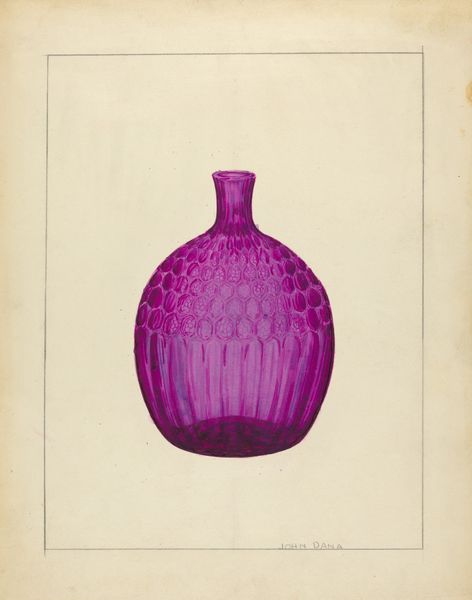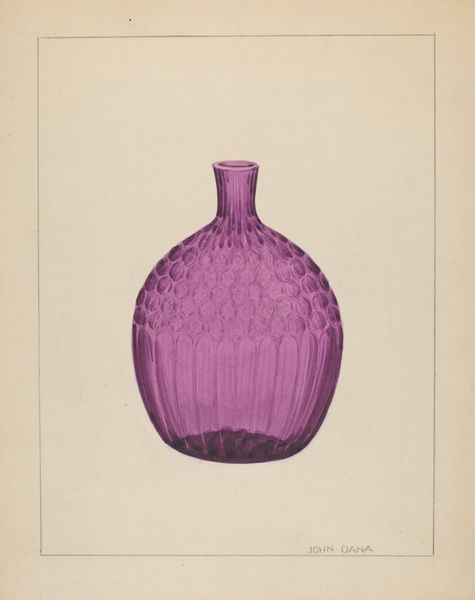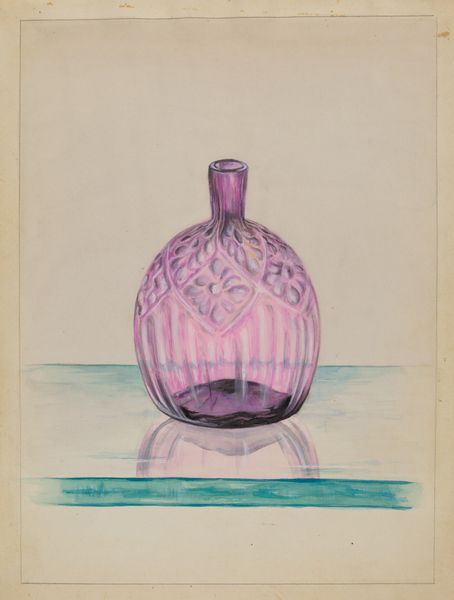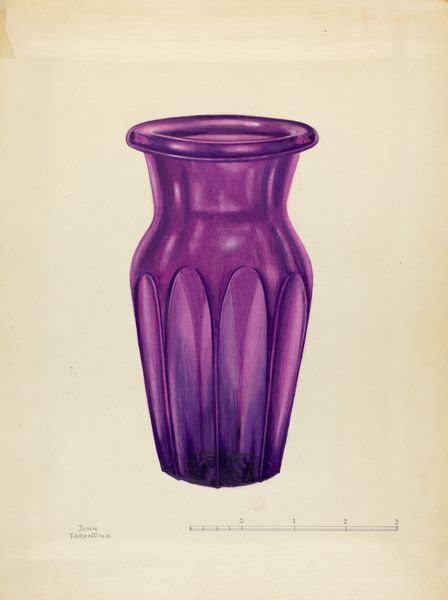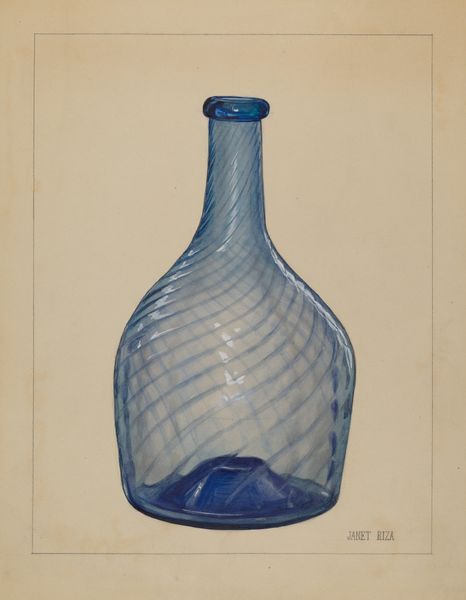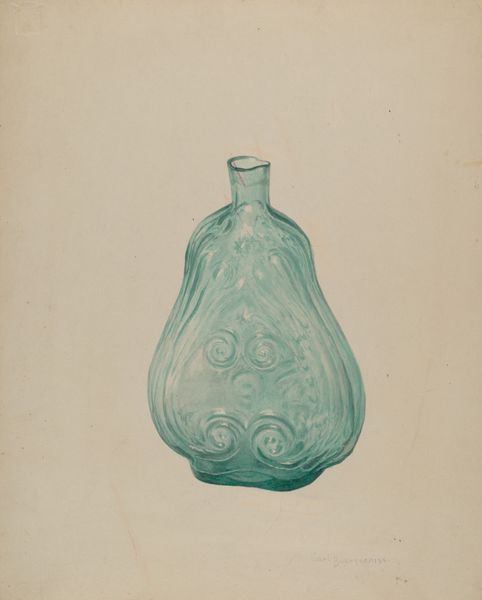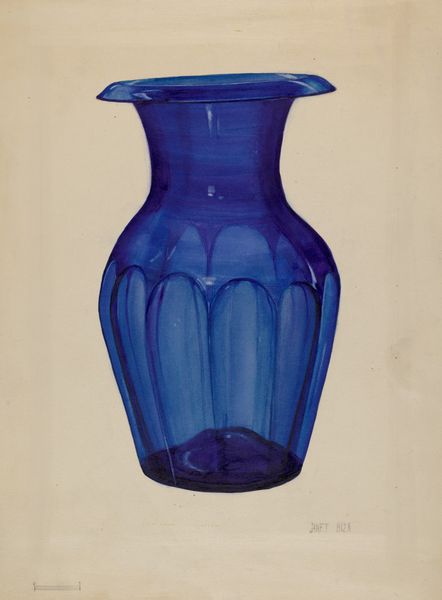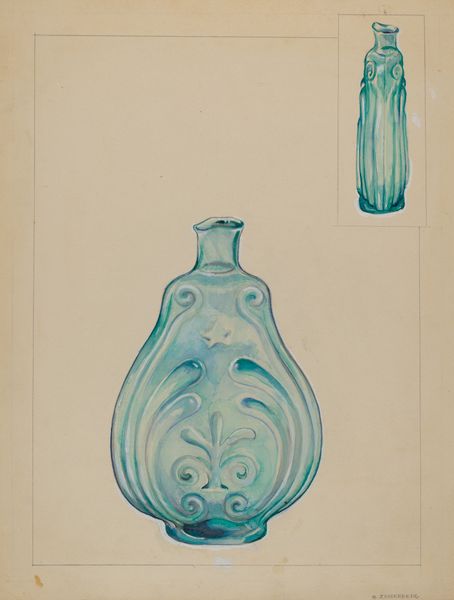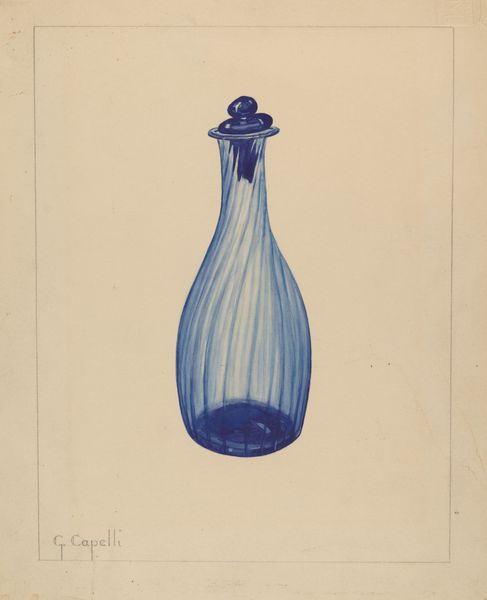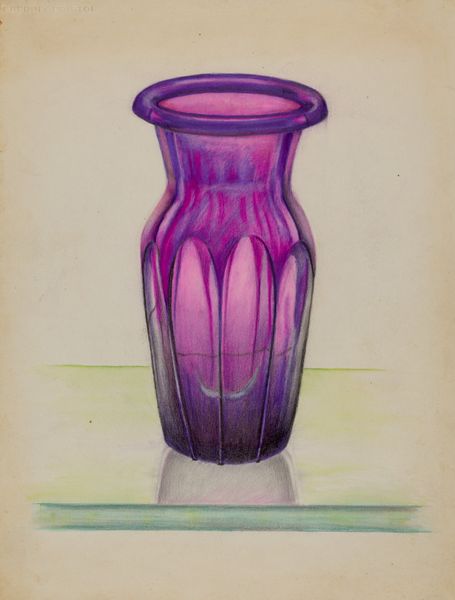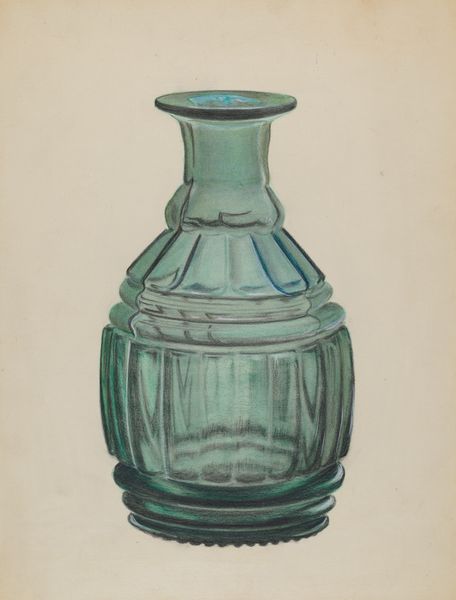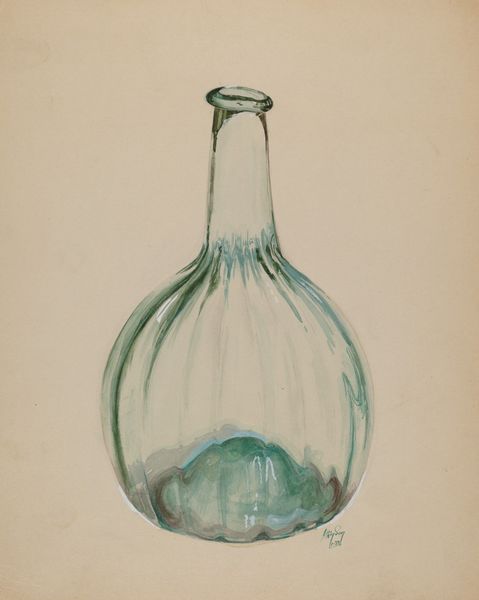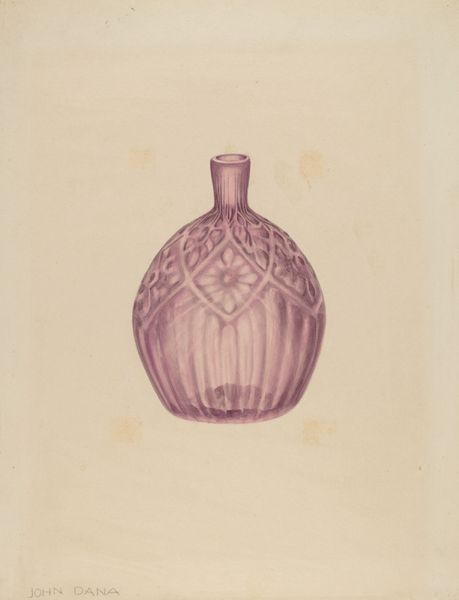
drawing, watercolor
#
drawing
#
water colours
#
oil painting
#
watercolor
#
geometric
#
watercolour illustration
#
watercolor
Dimensions: overall: 28.8 x 22.7 cm (11 5/16 x 8 15/16 in.)
Copyright: National Gallery of Art: CC0 1.0
Curator: This artwork is called "Bottle," a watercolor and drawing, created by John Tarantino between 1935 and 1942. Editor: Lavender, fragile, almost floating off the surface. It’s the color of amethyst and has a curious way of holding my gaze. It evokes that quiet between breaths. Curator: Tarantino's process is interesting here, combining both drawing and watercolor techniques. One can observe a very economic hand, utilizing pencil lines underneath to dictate and delineate form and the watercolor wash being applied strategically to imbue a quality of luminescence to the still life, or drawing, as one could easily label it. This almost makes it seem like it's emanating its own subtle light. The context surrounding this era suggests a certain domesticity. I mean it seems, likely an exercise rooted within the every-day object—humble yet elegant in its presence. Editor: Yes, the gentle gradations of light hint at the intimate, close observation of something very dear. The simple subject is elevated. Do you think this reflects maybe, something the artist was holding onto at a tumultuous moment of social anxiety? Curator: Perhaps so. The era encompassing this artifact involved certain economic, environmental and political events, thus affecting artists, such as Tarantino, their work, the kind of output they created. These still lives, especially of quotidian items, represent resilience, hope even within ordinary things during such difficult times. It represents that even in the worst circumstances, beauty could still be found through things such as an almost regal vessel, even such as something such as what water or wine might have been held in! Editor: I love the little geometric impressions that are subtly present, adding just a bit of depth to an otherwise plain vase, or vessel as you like to call it. It whispers secrets to only those who lean in. What do you make of that visual detail, process-wise? Curator: I find it rather charming. It’s a textured field and visual surface which draws a viewer even closer in and forces you to look into what you at first thought was simplicity in execution, but in fact rewards the viewer. Ultimately this pushes boundaries on one’s ideas of what can be called either just watercolor or drawing, something beautiful through material process in challenging economic times. Editor: Indeed! Thanks for drawing me into the humble complexity, it’s transformed how I see it now. Curator: Likewise, your observations remind us that there can be multiple truths, that there's complexity to art when examining the maker, their labor, and cultural backdrop to any work.
Comments
No comments
Be the first to comment and join the conversation on the ultimate creative platform.
